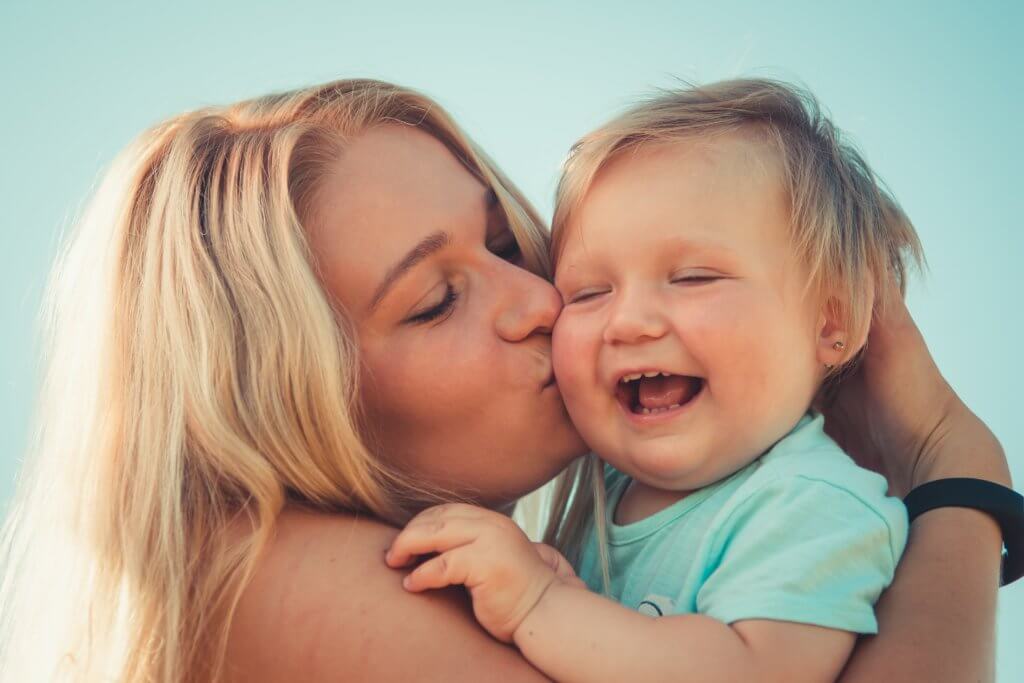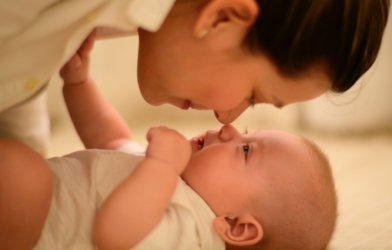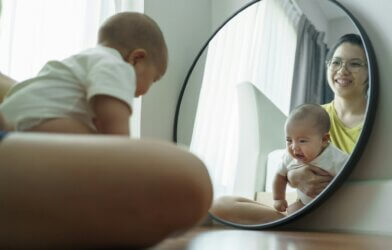From infancy, babies begin to observe the interactions of others around them. This is a survival instinct, as they gradually learn who they can rely on to come to their rescue if needed. How can babies determine close relationships from the dozens of people who show up to “ooh” and “ah” over them regularly? Whether it is sharing kisses or sharing bites of breakfast, MIT neuroscientists say that the commonality of these close relationships comes down to one thing: saliva.
“Babies don’t know in advance which relationships are the close and morally obligatory ones, so they have to have some way of learning this by looking at what happens around them,” says senior author Rebecca Saxe, a professor of brain and cognitive sciences and a member of MIT’s McGovern Institute for Brain Research (CBMM), in a statement.
Human relationships are generally broken into two types: “thick” and “thin.” As implied, “thick” relationships are a stronger attachment and are usually shared between family members.
“The general skill of learning about social relationships is very useful,” says lead author Ashley Thomas, who is also affiliated with the CBMM. “One reason why this distinction between thick and thin might be important for infants in particular, especially human infants, who depend on adults for longer than many other species, is that it might be a good way to figure out who else can provide the support that they depend on to survive.”
The researchers observed toddlers and babies as they watched interactions between human actors and puppets. In the first set of experiments, a puppet shared an orange with one actor, then tossed a ball back and forth with a different actor. After the children watched these initial interactions, the researchers observed the children’s reactions when the puppet showed distress while sitting between the two actors.
The team writes that the children were more likely to look toward the actor who had shared food with the puppet, not the one who had shared a toy when the puppet was in distress.
In a second set of experiments, designed to focus more specifically on saliva, the actor either placed her finger in her mouth and then into the mouth of the puppet, or placed her finger on her forehead and then onto the forehead of the puppet. Later, when the actor expressed distress while standing between the two puppets, children watching the video were more likely to look toward the puppet with whom she had shared saliva.
The researchers did their first set of studies shortly before Covid-19 lockdowns began, with babies who came to the lab with their families. Later experiments were done over Zoom. The results that the researchers saw were similar before and after the pandemic, confirming that pandemic-related hygiene concerns did not affect the outcome.
In future work, the researchers hope to perform similar studies with infants in cultures that have different types of family structures.
Article written by Rhonda Errabelli












